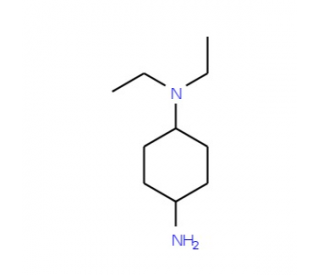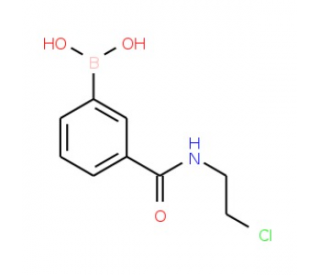详细说明
Purity
>95%, by SDS-PAGE under reducing conditions and visualized by Colloidal Coomassie® Blue stain
Activity
Di-Ub (K48-linked) FRET TAMRA Pos1 is ideal for use as a substrate for Ubiquitin-specific hydrolases with activity toward K48 linkages. We recommend an assay buffer consisting of 50 mM Hepes pH 7.5, 150 mM NaCl, 2 mM DTT. Fluorescence can be monitored with an excitation wavelength of 544 nM and an emission wavelength of 572 nM. Reaction conditions will need to be optimized for each specific application. We recommend an initial Di-Ub (K48-linked) FRET TAMRA Pos1 concentration of 100-500 nM.
Source
E. coli-derived
Accession #
Predicted Molecular Mass
17 kDa
UF-210 |
| |
Formulation X mg/ml (X μM) in 50 mM HEPES pH 7.5, 200 mM NaCl | ||
Shipping The product is shipped with dry ice or equivalent. Upon receipt, store it immediately at the temperature recommended below. | ||
Stability & Storage: Protect from light. Use a manual defrost freezer and avoid repeated freeze-thaw cycles.
|
Background: Di-Ubiquitin
With a predicted molecular weight of 17 kDa, Di-Ubiquitin is composed of two Ubiquitin monomers that are covalently linked through an isopeptide bond, which typically form between a lysine residue of one Ubiquitin molecule and the C-terminal glycine residue of another Ubiquitin molecule (1). Each human Ubiquitin monomer is 76 amino acids (aa) in length and shares 96% and 100% aa identity with yeast and mouse Ubiquitin, respectively (2). Ubiquitin has seven lysine residues that can participate in the formation of poly-Ubiquitin chains. The specific lysine residue used in Ubiquitin conjugation is thought to determine the function of poly-ubiquitination in cellular processes such as protein degradation, signaling, and trafficking (3-8).
Linkage specific di-Ubiquitin is a substrate for enzymes that cleave the isopeptide linkage between two Ubiquitin molecules. These FRET-based DUB substrates with isopeptide bonds between Ubiquitin moieties are superior to gel densitometry assays. Since DUBs recognize and cleave substrates with specific steric conditions, each substrate varies in the position of the fluorophore and quencher and must be empirically tested for individual enzymes.
References:
Scheffner, M. et al. (1995) Nature 373:81.
Sharp, P.M. & W.-H. Li (1987) Trends Ecol. Evol. 2:328.
Behrends, C. & J.W. Harper (2011) Nat. Struct. Mol. Biol. 18:520.
Greene, W. et al. (2012) PLoS Pathog. 8:e1002703.
Henry, A.G. et al. (2012) Dev. Cell 23:519.
Tong, X. et al. (2012) J. Biol. Chem. 287:25280.
Wei, W. et al. (2004) Nature 428:194.
Zhang, J. et al. (2012) J. Biol. Chem. 287:28646.
Entrez Gene IDs:
7314 (Human)
Alternate Names:
DiUbiquitin; Di-Ubiquitin; Ub2










 粤公网安备44196802000105号
粤公网安备44196802000105号